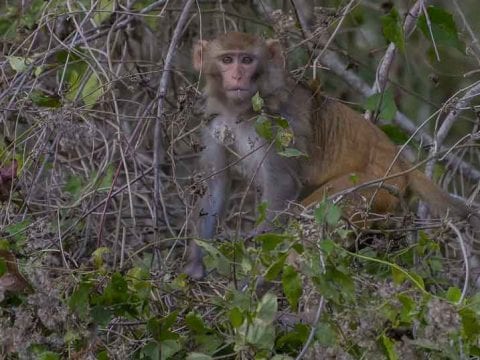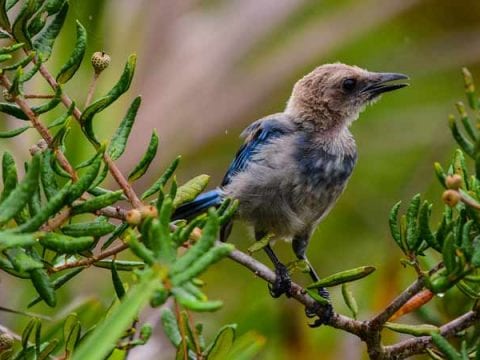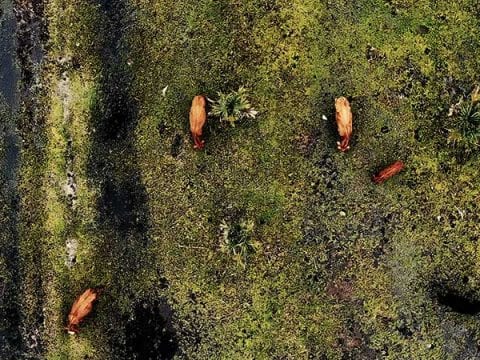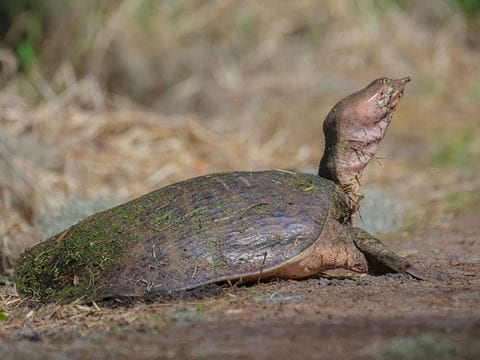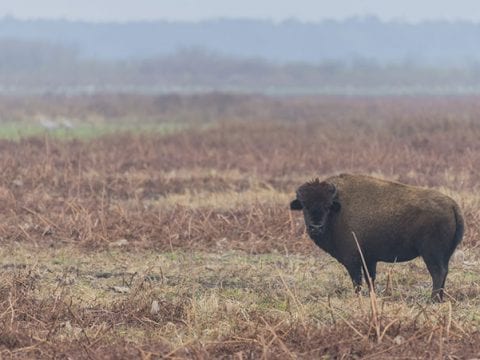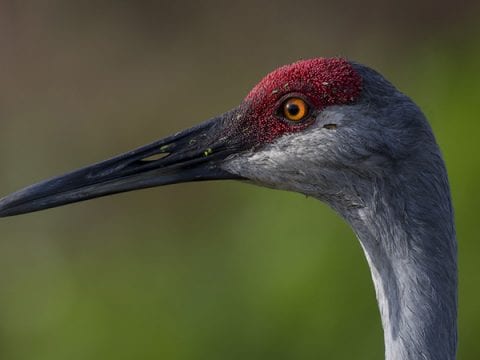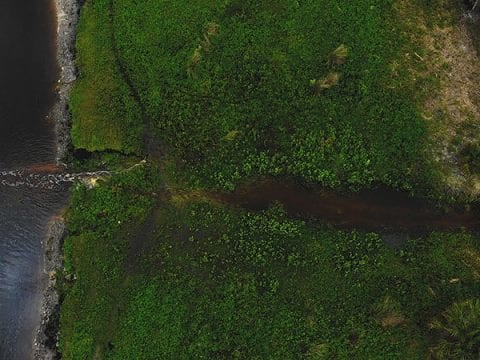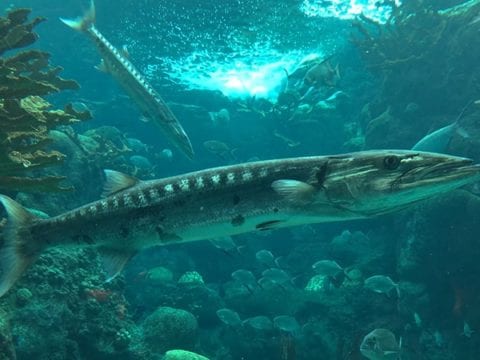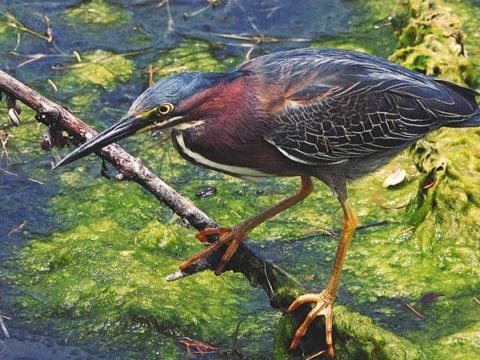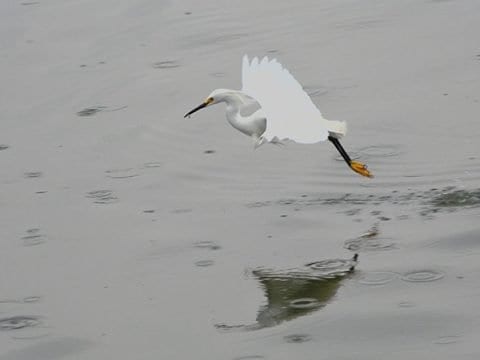Table of Contents
To me, the white ibis is one of the strangest birds I’ve ever seen. Living in Orlando, I see quite a few as I’m between 2 lakes. I walked outside my apt yesterday to find 1 single ibis walking around a small area that was just mowed. I happen to have my new camera with me so I set up and started filming. The white ibis was able to find a few grub and here is the 4K wildlife video of that feeding frenzy along with some white ibis facts.
White Ibis Facts
- Scientific name: Eudocimus albus
- The oldest White Ibis was 16 years old and four months. It was found in Florida in 1972 and was banded in Alabama in 1956.
- The University of Miami’s mascot is a White Ibis called Sebastian the Ibis. It is said that the name was chosen due to the ability to withstand hurricanes.
- Females are smaller than males, weighing nearly 10 ounces. They have shorter wings and a smaller bill.
- Males are very protective and they will guard their nest and their mate to prevent the stealing of sticks from the nest.
- They also do not like advances being made to their chosen mate by other males. When it is night, the female is all alone because her mate will leave her until morning.
- When White Ibises are hatched, they have very straight bills. It will not start to curve in until they are 14 years old.
Identification
White Ibises like to gather into groups along shallow wetlands and estuaries in southeastern United States. They have bright red legs that move through the water and a curved red bill that searches the water below. Adults are all white except for their black wingtips. They have football-shaped bodies and long necks that they hold straight out during flight. Younglings are brown and white. Their legs are orange-pink.
Size
Length
- 22-27 inches long
Weight
- 26-37 ounces
Behavior
White Ibises like to take long-legged steps through the shallow wetlands. They move slowly thorough the water to look for insects and crustaceans. White Ibises are very social birds who move, fly and nest together in groups. They walk slowly as they look to the ground below them for prey. When in flight, they alternate back and forth between gliding and rapidly beating their wings. White Ibises travel at 30 miles per hour and while they are wetland birds, they will roost/nest in trees.
Habitat
White Ibises are wetland birds so they can be found in freshwater marshes, mangroves, pastures that are flooded, swamps, shallow ponds, mudflats and coastal estuaries. Typically, they can be seen foraging for vegetation in water that is less than 8 inches deep. In southern Florida, they can be seen in parks and on lawns.
They nest in colonies both shrubs and trees that are near salt water, brackish or fresh water. They will forage more in freshwater during their nesting season because their nestlings cannot consume large amounts of saltwater safely. When they are not breeding, the coastal wetlands is where they like to be.
Diet
White Ibises like to graze the ground, probing it at times to looks for crustaceans and insects. They do this by inserting their bill into the soft muddy bottom of the wetland area to feel around for prey. Once they feel something, they pull it out like a pair of tweezers.
White Ibis Diet Include:
- Earthworms
- Marine worms
- Crayfish
- Crab
- Frogs
- Newts
- Snails
- Lizards
- Fish
Usually they will swallow their prey whole but sometimes, it’s too muddy and they need to wash it off first before they eat it. For crustaceans, they break down their hard shells and remove the claws from crabs and crayfish before swallowing.
White Ibis Reproduction
Mating
During mating season, both males and females will awkwardly free-fall and land in the nesting colony. Males will gather in large groups in the nesting colony before the females appear. As females start to land, males begin to show a series of displays: preening, bathing, group flights, head shaking and bill popping to attract a female. While in group flight, males will show off by spiraling up and down. Their baths are taken in groups, they nibble twigs with their bills (called popping) and they will preen extensively in front of females. After they have attracted a female, they grab and shake the head of the female which can cause her to bleed. They are now ready to mate.
Nesting
After they have brutally mated, the pair will continue to bond by crossing their necks, preening each other and greeting one another. They are a monogamous pair but males often will have more than one female. This is known as extra-pair copulation. For White Ibises, females choose where they want their nest built within a colony. Generally, nests are built in live or dead red bay, black elderberry, willow, cypress or black mangrove trees. If there is a taller source available, females will choose it because they want to keep predators away from their nests. Nest height is typically 0.5-12 feet off the ground. They change locations every year.
Males gather sticks for the nest by foraging the ground and using their bill to bring it back to desired location, the female will gather some sticks as well. They will either work together or the female will do most of the work, arranging the sticks in a pattern until she has a 10 inch wide, 2-4 inch tall nest. This takes about seven days. Both male and female will continue to maintain the nest throughout the nesting period. Males will defend it from predators and rival males and if they feel threatened, the male will lunge at the predator and snap his bill. If another rival gets too close, the male will attack by biting or holding down his rival’s head or wing.
Eggs
White Ibis eggs are cream to blue-green and have brown splotches. Only 2-3 eggs are delivered at one time on average but sometimes a female can lay 5 eggs. Both mama and papa bird will incubate their eggs for 21 days.
Nestlings
Nestlings are born with their eyes closed and their body is covered with a gray and black down. For 40-60 days after hatching, both parents will feed their nestlings by regurgitating in their mouth. Nestlings may start to clamber about and near the next three weeks after hatching. Around 4-5 weeks old, they can take short flights and longer flights when they are 6 weeks old. At 7 weeks, they can leave the colony to forage with adults. While in the nest and around the colony, the nestlings learn a lot of about foraging and flying.
Video Equipment Used
Camera Gear
- Sony FDR-AX100
- Manfrotto Tripod
Software Used
- Adobe Premiere Pro CC
LUT
- None (SOOC)

